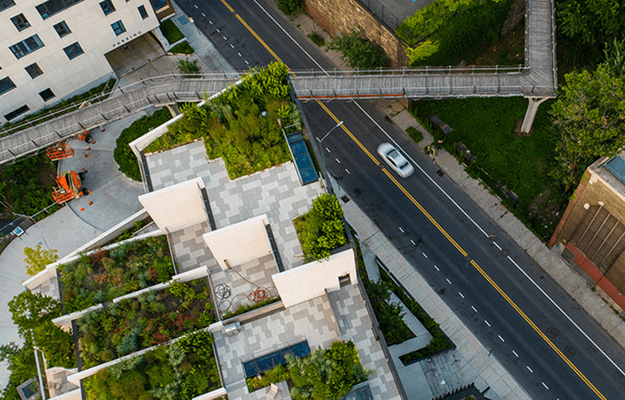
How Cities Can Incorporate Green Technology to Improve Resident Outcomes and Save Billions
- Title:
- How Cities Can Incorporate Green Technology to Improve Resident Outcomes and Save Billions
- Author:
-
Greg Kats, Keith Glassbrook
- Source:
-
Capital E
- Publication Date:
-
2018
Cities across the country experience higher summer temperatures and worse air pollution than surrounding suburban and rural areas, and low-income communities in cities—which generally have greater population density, dark surfaces, and less tree coverage—feel these effects even more. Excess heat and poor air quality are tied to increased health problems, high energy bills, and decreased productivity in schools and at work. Can greener infrastructure reverse these effects while saving cities money? This report analyzes the costs and benefits of applying smart surface technologies (e.g., cool roofs, green roofs, solar photovoltaic systems, reflective pavements, and urban trees) in El Paso, Texas; Philadelphia, Pennsylvania; and Washington, DC, which previous research has not done. It draws on multiple methods, studies, and models to create an integrated methodology to estimate the impact of smart surface technologies. Costs include first costs, operations and maintenance, additional replacements, and employment training. Estimated benefits include energy savings, financial incentives, stormwater management, health outcomes, climate change, and employment. Additional impacts are not included because of insufficient data or lack of existing rigorous studies. The findings suggest that investing in smart surface technologies in urban areas can improve health outcomes, create jobs, and strengthen resilience while securing billions in net financial benefits.
Key findings
- Urban cooling benefits would reduce peak electricity demand and cooling energy consumption like air conditioning, increasing efficiency and lowering energy bills. While high-income renters spend about 2 percent of their income on energy costs, low-income renters spend about 10 percent.
- Ground-level ozone formation typically increases with air temperature, so lower air temperatures from increased use of smart surfaces results in lower levels of ground-level ozone. This provides large but diffuse health benefits, including decreased incidence of asthma, heart disease, and premature death. Low-income residents would experience 50 percent greater health benefits compared with the average city resident with the implementation of smart surface technology.
- The construction and maintenance of green infrastructure could create new “green collar” employment opportunities for low-income residents who experience higher rates of unemployment. The report estimates that over 40 years, low-income residents in Washington, DC; Philadelphia; and El Paso would receive $120 million, $542 million, and $210 million of additional income, respectively.
- The net present value of using smart surface solutions would be $540 million for El Paso; $1.8 billion for Washington, DC; and $3.5 billion for Philadelphia. This number increases for Washington, DC, and Philadelphia when the estimated value of avoided summer tourism revenue losses is considered.
Photo by Monkey Business Images/Shutterstock


